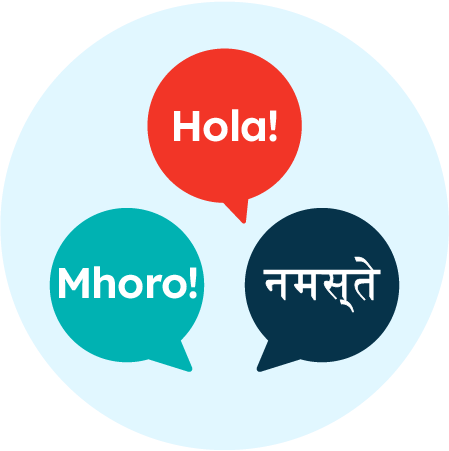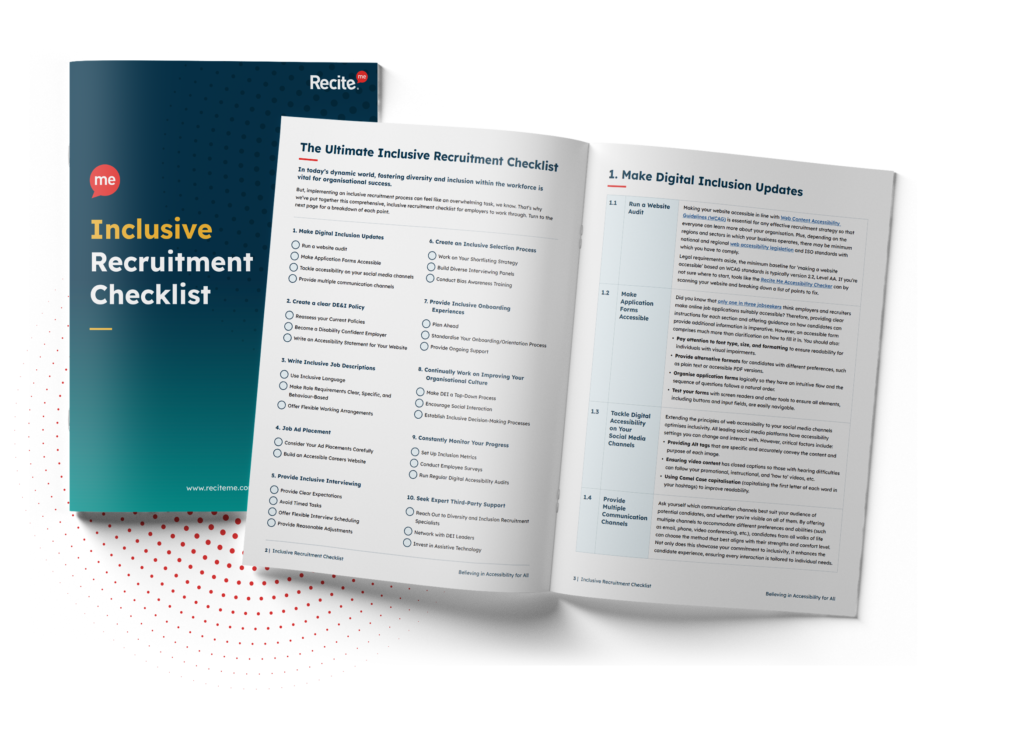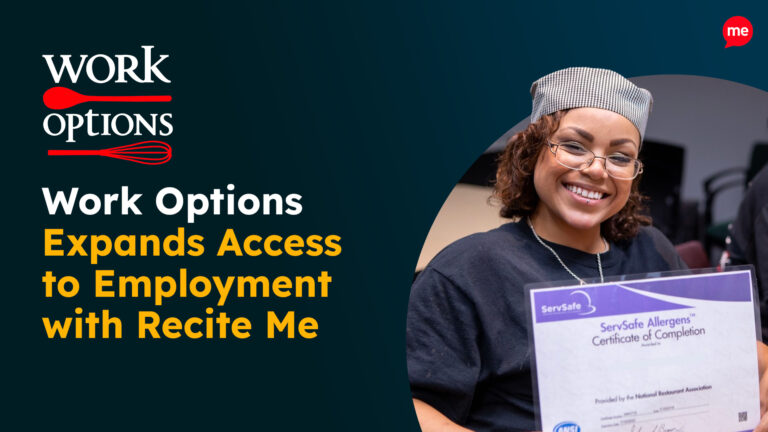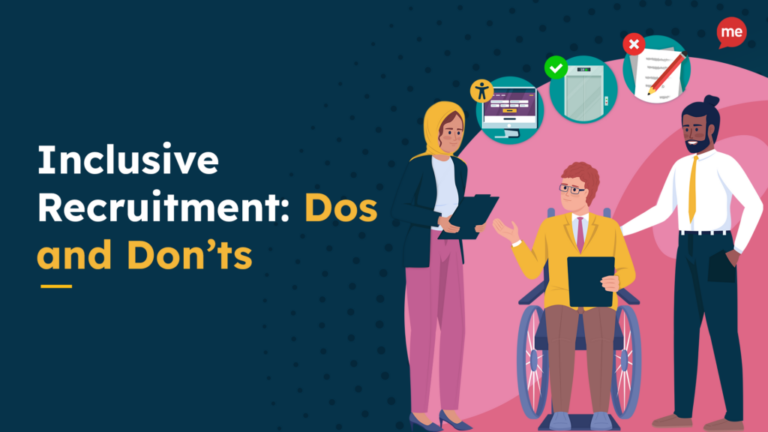October is National Disability Employment Awareness Month (NDEAM)- an important time to reflect on and raise awareness about the employment challenges faced by disabled individuals. It’s an opportunity for employers to take action toward fostering more inclusive workplaces. Disability inclusion is not just about meeting legal obligations; it’s about creating an environment where everyone, regardless of ability, can contribute fully and thrive.
Helping to create a more welcoming society that is supportive of diverse individual needs is at the very core of everything we do here at Recite Me. It’s the reason that the company exists, and why the whole team will always get behind efforts to forge positive change by improving people’s understanding of accessibility and inclusion.
Every day, millions of people with diverse abilities and language needs seek employment on job boards like Indeed and Jooble job aggregator, searching for their next career move. So, let’s get started…
The Importance of Disability Inclusion
Despite progress in diversity and inclusion, people with disabilities continue to face significant barriers to employment. According to the U.S. Department of Labor, the unemployment rate for people with disabilities is consistently higher than for those without disabilities. The underrepresentation of disabled individuals in the workforce not only limits opportunities for them but also deprives companies of diverse talent and perspectives.
Download Breaking Barriers: Inclusive Hiring for All Report
In today’s competitive job market, companies are eager to attract diverse talent, but hidden online barriers are slowing them down
Download the report to dive into the current state of the recruitment industry when it comes to attracting diverse talent. Uncover some of the main barriers that diverse candidates face in the recruitment process and how recruiters can address these.
Who is Excluded Online
While there has undoubtedly been some considerable progress, it’s essential to note that challenges and disparities still exist. But you can’t take steps to improve inclusion unless you understand the problems faced by those who struggle to access information.
It is estimated that one in four Americans have a disability that can make accessing online information challenging. That is over 61 million individuals:

Sight Loss
Approximately 12 million people in the USA are affected by vision problems, encompassing blindness, partial blindness, and color blindness.

Neurodiversity
At least 15% of the population have neurodivergent traits like dyslexia, dyspraxia, hyperlexia, and dysgraphia.

Learning Disabilities
The CDC estimates that over 70 million people in the US have a learning disability.

Language/linguistic problems
68 million people speak a language other than English at home.

Attention disorders
It’s estimated that around 8 million adults (up to 5% of Americans) have ADHD.
5 Steps to an Inclusive Workforce
Looking for guidance and best practices on how to attract, train, and retain the best talent for your teams? To do that, you’ll need to include people with physical and hidden disabilities. Here’s a comprehensive list of the strategies you should be adopting.
1. Ensure Leadership Commitment
Creating an inclusive culture is not a one-time process. Ensuring leadership commitment from the top down is essential for setting the tone and prioritizing inclusion efforts. When leaders actively endorse and prioritize disability inclusion, it sends a powerful message to employees at all levels. It communicates that this is not just a matter of compliance, but a core value of the company.
2. Develop Inclusive Hiring Practices
Integrating diversity and inclusion into recruitment processes is essential. You’ll need to:
- Review and update current processes to ensure they are accessible to candidates with disabilities.
- Ensure your organization complies with the anti-discrimination laws laid out in the Americans with Disabilities Act (ADA).
- Promote job openings in disability-specific networks and communities.
- Provide an inclusive candidate journey for new recruits by ensuring your website complies with the Web Content Accessibility Guidelines (WCAG).
- Ensure your social media profiles are accessible.
- Build diverse interviewing panels that adopt inclusion principles into the process.
3. Commit to New Diversity and Inclusion Policies and Initiatives
A company’s culture doesn’t become magically inclusive just by willing diversity, equity, and inclusion (DEI) policies into existence. A concerted effort is needed to ensure the measures you put in place are actionable rather than a ‘check the box’ exercise.
The first step is to conduct accessibility audits and assessments to better understand where you are now, and what changes are required going forward. Here are some examples of strategies you could use:
- Operate a confidential ‘open door’ policy for staff to voice their needs or concerns, knowing they will be heard.
- Create Employee Resource Groups (ERGs) that provide employees with a safe space to meet and discuss common interests and issues.
- Be proactive in regularly gathering employee feedback and ensuring that employees with disabilities have a say in decision-making processes.
- Encourage direct staff involvement in diversity and inclusion discussions, and incorporate mental health management into employee review processes.
- Provide diversity and inclusion training for recruiters, interviewers, onboarding teams, and managers.
- Educate employees on disability inclusion through workshops, seminars, and awareness campaigns.
4. Make Adjustments for Disabled Employees
Many companies shy away from accessibility and inclusion adjustments as they perceive them as too complex, expensive, or difficult to work around. However, this is a misperception, as the average cost of making an accommodation for a disabled employee is just a few hundred dollars – and one industry report suggests that nearly half of all accommodation costs for disabled employees are free.
So, what adjustments should you be making? A few examples include:
- Making workstation modifications – Like adjustable desks, ergonomic chairs, keyboards, and computer mice.
- Updating documentation and communication – The basics include using dyslexia-friendly fonts, providing documents in alternative formats, and installing tactile signage.
- Providing accessibility tools – Such as magnifiers, screen readers, text-to-speech software, voice recognition software, dictation tools, and customizable assistive technology solutions.
5. Commit to Continuous Improvement
It’s a good idea to establish mentoring programs that pair employees with disabilities with mentors who can provide guidance and support. You’ll also need to:
- Set and track key performance indicators related to disability inclusion to measure progress and identify areas for improvement.
- Ensure that employees with disabilities have equal opportunities for career advancement, promotions, and leadership roles.
- Communicate clearly that your organization has a zero-tolerance policy for discrimination and harassment based on disability.
- Stay informed about emerging assistive technology trends.
- Collaborate with assistive technology experts and organizations.
2024 Recruitment Data
Recite Me is proud to work alongside several leading organizations dedicated to improving online inclusion for their employees, and candidates. Our most recent report demonstrates the need for website customization and the associated real-world benefits for the businesses that offer it. For example, stats over the last 12 months show that:
- Over 43 million web pages have been viewed using the Recite Me toolbar.
- On average, website visitors who use the Recite Me toolbar on utility websites viewed 6.81 pages, much higher than the average internet journey depth of just 2.8 pages per visit.
- Over 70 million pieces of content were read aloud using the Recite Me screen reader.
- Over 80 million pieces of content were translated into different languages.
Download our Inclusive Recruitment Checklist
Attract the best talent for your organization by becoming an inclusive employer!
Inclusive recruitment doesn’t have to be complicated. This checklist breaks down everything you need to know to attract and retain diverse candidates. Download your checklist today and get started right away.





